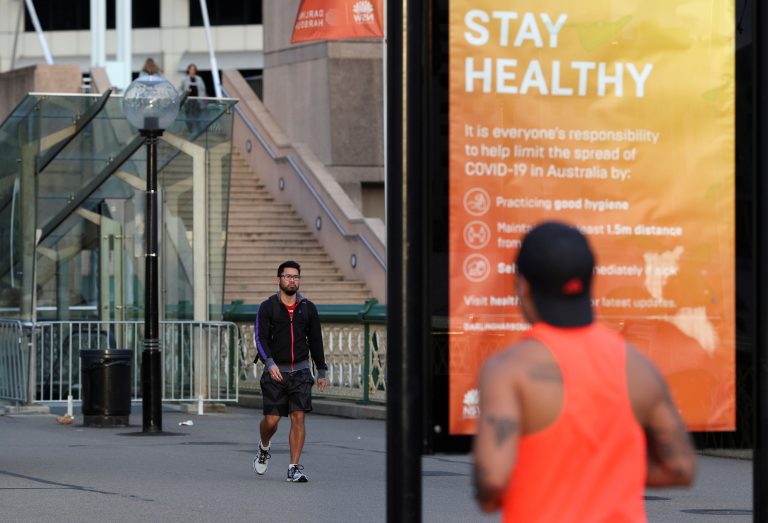
SYDNEY, May 19 (Reuters) – Children in Australia’s most populated state will return to school full-time next week, a major step towards normalising life amid the coronavirus pandemic, as the nation on Tuesday recorded its 100th fatality from the disease.
While a grim milestone, Australia’s death toll remains well below the fatalities reported in North America, Europe and other parts of Asia despite the Pacific country’s earlier exposure to the pandemic.
The 100th fatality was a 93-year-old woman from a care home outside Sydney, the origin of 19 deaths, local media reported.
The directive from New South Wales (NSW) Premier Gladys Berejiklian to reopen schools full-time lifts childcare responsibilities for the parents and carers of around 800,000 children in public schools as Australia seeks to stem a surge in unemployment and restart the economy.
“From now on, we don’t ever want to see a situation where all schools are closed,” Berejiklian told reporters in Sydney, although she cautioned that individual, temporary closures were likely to contain future outbreaks.
The decision caught the state’s teachers union by surprise, with Teachers Federation President Angelo Gavrielatos saying it “caused a lot of concern, frustration and anger among teachers and principals.”
“They turned themselves inside out, not once, not twice, but repeatedly, trying to come to terms with this crisis and fulfilling their professional and social and moral responsibilities,” Gavrielatos told Australian Broadcasting Corp television.
Australia’s states and territories are beginning to allow more public activity under a three-step federal government plan to end two months of shutdowns that officials have credited with keeping the country’s exposure to the pandemic relatively low.
The Reserve Bank of Australia (RBA) warned on Tuesday the country is facing an “unprecedented” economic contraction, though massive fiscal and monetary policy stimulus would help cushion the blow.
Minutes of the RBA’s meeting earlier this month showed the baseline case was for gross domestic product to fall by 10% in the first half and 6% for all of 2020.
Changes in New South Wales are being closely watched as the state accounts for more than 40% of Australia’s 7,060 confirmed COVID-19 infections, and almost half the 100 deaths nationally.
In neighbouring Victoria, the second-most populous state, the resumption of school was continuing on a staggered basis, with full-time lessons for all pupils not due to resume until early next month.
QANTAS PLANS
Australia’s rate of new daily infections peaked on March 23 with 430 cases, according to the Reuters tally. New cases have averaged about 15 a day over the past week.
Australia’s mortality rate for those with the disease is just over 1%, compared with around 6% for the United States where around 89,000 people have died, 14% for the United Kingdom and Italy and 15% for France.
One of the few countries to provide detailed data on the progression of the reported cases beyond death statistics, Australia’s recovery rate stands at just over 90%.
Meanwhile, Qantas Airways Ltd detailed new safety measures for the resumption of its flights. The country’s largest airline said it could restart 40-50% of its domestic capacity in July if states relax border controls, and expects to offer low and flexible fares without social distancing measures to stimulate travel demand.
The airline will introduce measures on board from June 12 such as providing masks and cleaning wipes to ensure safe travel and give passengers peace of mind during the pandemic, but will not leave middle seats empty.





